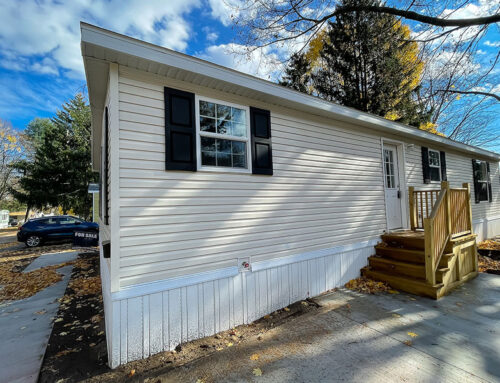I’ve been investing in New York City real estate for decades and if I had a dollar for every time someone asked me “How is the real estate market in NYC?”, I’d be able to afford multiple properties in Noho, Hudson Yards, Tribeca, Central Park South, or Nolita. Unfortunately, that isn’t the case, but I can tell you exactly what I’ve told those who’ve asked about the real estate market in NYC: There’s no one real estate market in New York City, in my opinion.
This city, with all of its boroughs, neighborhoods, and sub-neighborhoods, has the potential to behave like several different real estate markets at any given time. This variation can make real estate investment decisions a challenge but understanding cap rates in NYC can be a solution.
Understanding the Cap Rate
The capitalization rate (or “cap rate”) is the most common metric for measuring the value of a potential real estate investment. Simply put, it’s a calculation of the returns the property will produce each year, or net operating income (NOI) in relation to its operational costs.
To determine a property’s cap rate, you divide the NOI (after expenses) by the market value. Here’s the formula:
Net Operating Income / Current Market Value = Capitalization Rate
It’s important to do this calculation using the fair market price for the property—not what you actually paid for it, because any renovations or improvements you do will affect the market value and, subsequently, the cap rate.
Applying the Cap Rate Formula to NYC Real Estate
Finding real estate in NYC is competitive, but it’s not impossible. The cap rate can help in determining whether or not a property will be a worthwhile investment. Take a look at the example below to see how you could apply the cap rate formula to real estate in NYC.
Example:
Let’s say the house you are looking at is selling for $450,000. By looking at median rental prices in New York, you estimate that you’ll be able to charge $3,500 a month for rent. For simplicity’s sake, let’s go with the “50% Rule of Thumb,” which states that all your operating costs—including your mortgage—should equal half your rental income. So after paying property taxes, upkeep, maintenance, and other expenses, you bring in $1,750 of income per month from the property. Your net operating income is $21,000 a year. Divide this NOI by $450,000, and you get 0.0467, which translates into a cap rate of approximately 4.6%. This means that your annual return on your investment (ROI) is 4.6%. In other words, if you buy a property, your annual net income for the property will be 4.6% of what you paid for it.
Generally speaking, a low cap rate represents a low level of risk, while a high cap rate implies more risk. It is up to you to decide what risk-adjusted return is appropriate for your business goals. You’ll likely want to consult with a professional financial advisor—especially if you took out a loan to finance the investment. Depending on your loan terms and rates, your net income may be greatly reduced.
The Average Cap Rates in NYC
You shouldn’t expect to be able to charge the same rent in outer boroughs as you would in downtown Manhattan. So it makes sense that this variation in rent spills over into cap rates as well.
Average cap rates in each borough vary, though they are usually between 3% and 6%. Generally speaking, Queens and the Bronx have the highest average cap rates, and Brooklyn and Manhattan the lowest.
It might be weird to think of the hottest neighborhoods having the lowest rates. After all, even with a huge year-to-year drop, rental rates in Manhattan still average $3,700 per month; $3,100 per month in Brooklyn; and $2,600 per month in Queens.
But, property costs a lot more in these areas which increases your operating cost. Taxes could also impact costs quite a bit. In some areas, almost 40% of operating income goes toward paying taxes. That’s why finding off-market properties in NYC, especially in neighborhoods that aren’t considered as desirable, can often be your best bet.
It’s important to understand that an average cap rate in any neighborhood doesn’t account for the actual expenses of your property. And, it doesn’t take into account your debt.
Understanding how to calculate the cap rate is a great way to look for potential investment properties, but it isn’t the only method.
The Best Way to Find Potential Real Estate Investments
You may be thinking that there’s so much to understand when it comes to surveying the real estate market and cap rates in NYC. But, all you need is the right tools and support to help you along the way. I got started in real estate investing in NYC by joining the HomeVestors® network of independently owned and operated franchises.
With HomeVestors®, you’ll have the one-on-one guidance of a Development Agent, someone who’s likely a veteran real estate investor in NYC and can guide you through finding potential within the varying market. You’ll also gain access to innovative investing software such as the proprietary ValueChek™ property valuation tool and a sophisticated lending portal to connect you with some of the best hard money lenders in the business.
Don’t miss out on your chance to invest in NYC’s real estate market. Request information today to learn more about joining the HomeVestors® network of independently owned and operated franchises.
Each franchise office is independently owned and operated.
Contact
"*" indicates required fields





